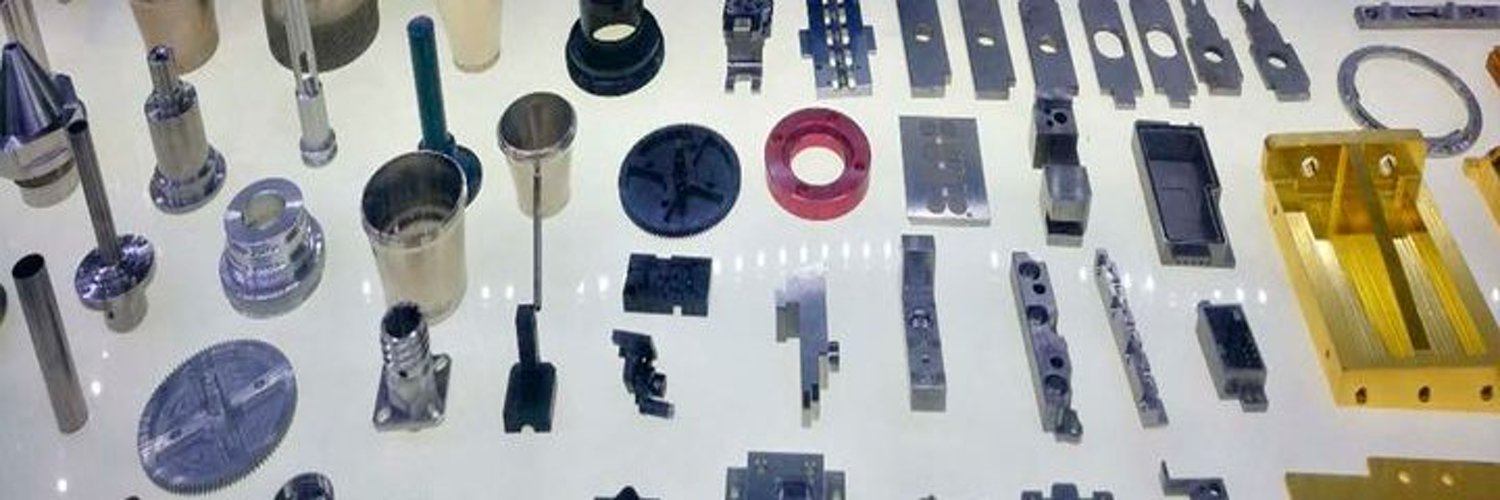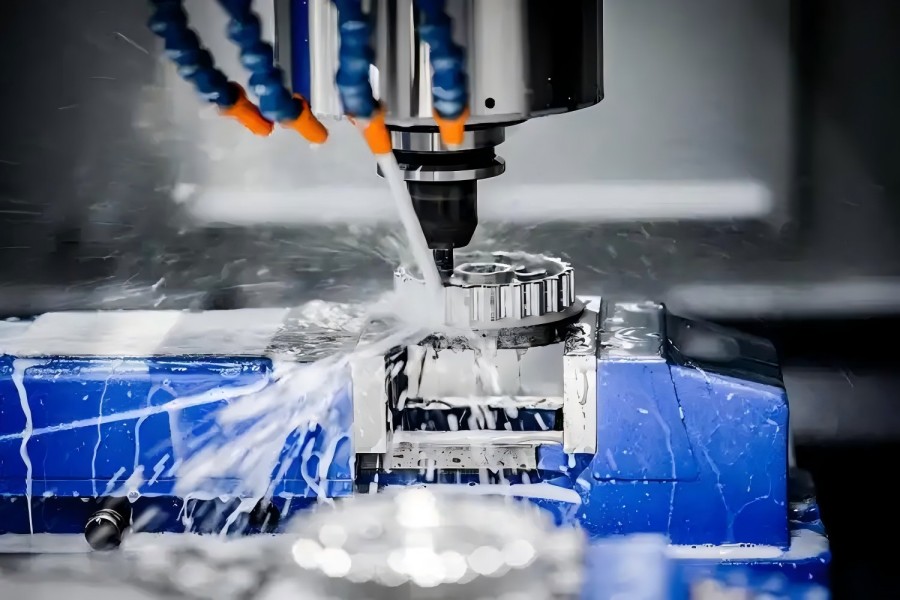News Categories
Contact Us
020-86988980
- Guangzhou Sinoth Import and Export Co., LTD
Tel: 020-8968-8980
Website:www.gzsynoth.com
Email: belinda@dginfa.com(24 hours online)
Phone: +86 189 2740 6786
Address: No 5, Jinshi Three Street, Shiling Town, Huadu District,Guangzhou City, Guangdong Province
News
Current Location:Home > News > News
CNC Machined Parts: How to Reduce Scratches
Add Time:2025-03-28
In the world of CNC machined parts, precision and surface quality are critical factors. Scratches on CNC machined parts can compromise the overall quality, leading to functional and aesthetic defects. In this article, we will explore practical methods to reduce scratches during the CNC machining process, ensuring high-quality, precision metal components.
Understanding the Causes of Scratches on CNC Machined Parts
Scratches can occur during various phases of the CNC machining process. Understanding their root causes helps in preventing them effectively. Here are some common reasons for scratches on CNC machined parts:
Tool Wear: Worn-out cutting tools can create rough finishes, increasing the likelihood of scratches.
Debris and Chips: Metal chips and debris produced during machining can get trapped between the tool and the part, leading to surface damage.
Improper Handling: Mishandling parts, especially during post-machining, can introduce scratches even after a perfect cut.
Inadequate Lubrication: Lack of proper lubrication can cause friction between the tool and the part, leading to scratches.
By addressing these issues, you can significantly reduce the occurrence of surface imperfections.
Best Practices to Prevent Scratches on CNC Machined Parts
First. Use Sharp, High-Quality Tools
One of the most effective ways to reduce scratches is by using sharp and high-quality cutting tools. Dull tools cause excessive friction, leading to rough surfaces and scratches. Regularly inspect and replace worn tools to maintain precision and surface quality.
Second. Optimize Cutting Parameters
Setting the correct cutting parameters, such as feed rate and speed, is essential for achieving a smooth finish. High feed rates with inappropriate speeds can cause the tool to drag against the material, leading to scratches. By optimizing these parameters, you can reduce the likelihood of surface imperfections.Adjust the feed rate to match the material being machined.Use the appropriate cutting speed to minimize friction.
Third. Implement Proper Chip Management
Metal chips produced during the machining process can easily get trapped between the tool and the part, causing scratches. Implementing proper chip management—like using air blowers or coolant systems—can help keep the machining area clean and free of debris.Use air blowers to clear chips from the cutting zone.Ensure coolant systems are functioning properly to flush out debris.
Fourth. Use Protective Coatings
Applying protective coatings to CNC machined parts can reduce the risk of scratches. Coatings such as anodizing or passivation not only provide protection from scratches but also improve the overall wear resistance of the part. These coatings can be especially beneficial when working with precision metal components that require high durability.
Fifth. Proper Handling and Storage
Post-machining handling is crucial in preventing scratches. Mishandling parts or storing them improperly can result in unnecessary surface damage. Follow these tips:
Use protective gloves when handling parts to avoid direct contact with metal surfaces.
Store machined parts in soft, padded containers to prevent them from rubbing against one another.
Sixth. Regular Machine Maintenance
Regular maintenance of your CNC machine is essential for minimizing issues that can lead to scratches. A well-maintained machine operates smoothly, reducing the chances of faulty cuts or tool drag that can damage the surface of CNC machined parts.
Ensure that spindles and guideways are clean and lubricated.Regularly check for machine alignment to ensure precision during machining.Advanced Techniques to Minimize ScratchesBeyond basic prevention methods, there are advanced techniques to further minimize scratches on CNC machined parts.
Use Polishing Techniques
After machining, polishing can be used to refine the surface and remove any minor scratches that may have occurred. Techniques like buffing or vibratory finishing can smooth out rough patches, enhancing the overall surface quality of the part.
Utilize Multi-Axis Machining
Multi-axis CNC machining allows for more complex movements, which can reduce the chances of scratching. By minimizing tool retractions and repositioning, the chances of surface imperfections are lowered. For precision metal parts, multi-axis machining is highly effective in producing scratch-free surfaces.
Apply Soft Jaws and Fixtures
Using soft jaws or custom fixtures can help secure parts without damaging the surface. These fixtures are designed to hold parts firmly while reducing the pressure on sensitive areas, preventing scratches during the machining process.
Conclusion
Reducing scratches on CNC machined parts is essential for ensuring the quality and functionality of your components. By following these best practices, such as using sharp tools, optimizing cutting parameters, and imple.
Understanding the Causes of Scratches on CNC Machined Parts
Scratches can occur during various phases of the CNC machining process. Understanding their root causes helps in preventing them effectively. Here are some common reasons for scratches on CNC machined parts:
Tool Wear: Worn-out cutting tools can create rough finishes, increasing the likelihood of scratches.
Debris and Chips: Metal chips and debris produced during machining can get trapped between the tool and the part, leading to surface damage.
Improper Handling: Mishandling parts, especially during post-machining, can introduce scratches even after a perfect cut.
Inadequate Lubrication: Lack of proper lubrication can cause friction between the tool and the part, leading to scratches.
By addressing these issues, you can significantly reduce the occurrence of surface imperfections.
Best Practices to Prevent Scratches on CNC Machined Parts
First. Use Sharp, High-Quality Tools
One of the most effective ways to reduce scratches is by using sharp and high-quality cutting tools. Dull tools cause excessive friction, leading to rough surfaces and scratches. Regularly inspect and replace worn tools to maintain precision and surface quality.
Second. Optimize Cutting Parameters
Setting the correct cutting parameters, such as feed rate and speed, is essential for achieving a smooth finish. High feed rates with inappropriate speeds can cause the tool to drag against the material, leading to scratches. By optimizing these parameters, you can reduce the likelihood of surface imperfections.Adjust the feed rate to match the material being machined.Use the appropriate cutting speed to minimize friction.
Third. Implement Proper Chip Management
Metal chips produced during the machining process can easily get trapped between the tool and the part, causing scratches. Implementing proper chip management—like using air blowers or coolant systems—can help keep the machining area clean and free of debris.Use air blowers to clear chips from the cutting zone.Ensure coolant systems are functioning properly to flush out debris.
Fourth. Use Protective Coatings
Applying protective coatings to CNC machined parts can reduce the risk of scratches. Coatings such as anodizing or passivation not only provide protection from scratches but also improve the overall wear resistance of the part. These coatings can be especially beneficial when working with precision metal components that require high durability.
Fifth. Proper Handling and Storage
Post-machining handling is crucial in preventing scratches. Mishandling parts or storing them improperly can result in unnecessary surface damage. Follow these tips:
Use protective gloves when handling parts to avoid direct contact with metal surfaces.
Store machined parts in soft, padded containers to prevent them from rubbing against one another.
Sixth. Regular Machine Maintenance
Regular maintenance of your CNC machine is essential for minimizing issues that can lead to scratches. A well-maintained machine operates smoothly, reducing the chances of faulty cuts or tool drag that can damage the surface of CNC machined parts.
Ensure that spindles and guideways are clean and lubricated.Regularly check for machine alignment to ensure precision during machining.Advanced Techniques to Minimize ScratchesBeyond basic prevention methods, there are advanced techniques to further minimize scratches on CNC machined parts.
Use Polishing Techniques
After machining, polishing can be used to refine the surface and remove any minor scratches that may have occurred. Techniques like buffing or vibratory finishing can smooth out rough patches, enhancing the overall surface quality of the part.
Utilize Multi-Axis Machining
Multi-axis CNC machining allows for more complex movements, which can reduce the chances of scratching. By minimizing tool retractions and repositioning, the chances of surface imperfections are lowered. For precision metal parts, multi-axis machining is highly effective in producing scratch-free surfaces.
Apply Soft Jaws and Fixtures
Using soft jaws or custom fixtures can help secure parts without damaging the surface. These fixtures are designed to hold parts firmly while reducing the pressure on sensitive areas, preventing scratches during the machining process.
Conclusion
Reducing scratches on CNC machined parts is essential for ensuring the quality and functionality of your components. By following these best practices, such as using sharp tools, optimizing cutting parameters, and imple.



